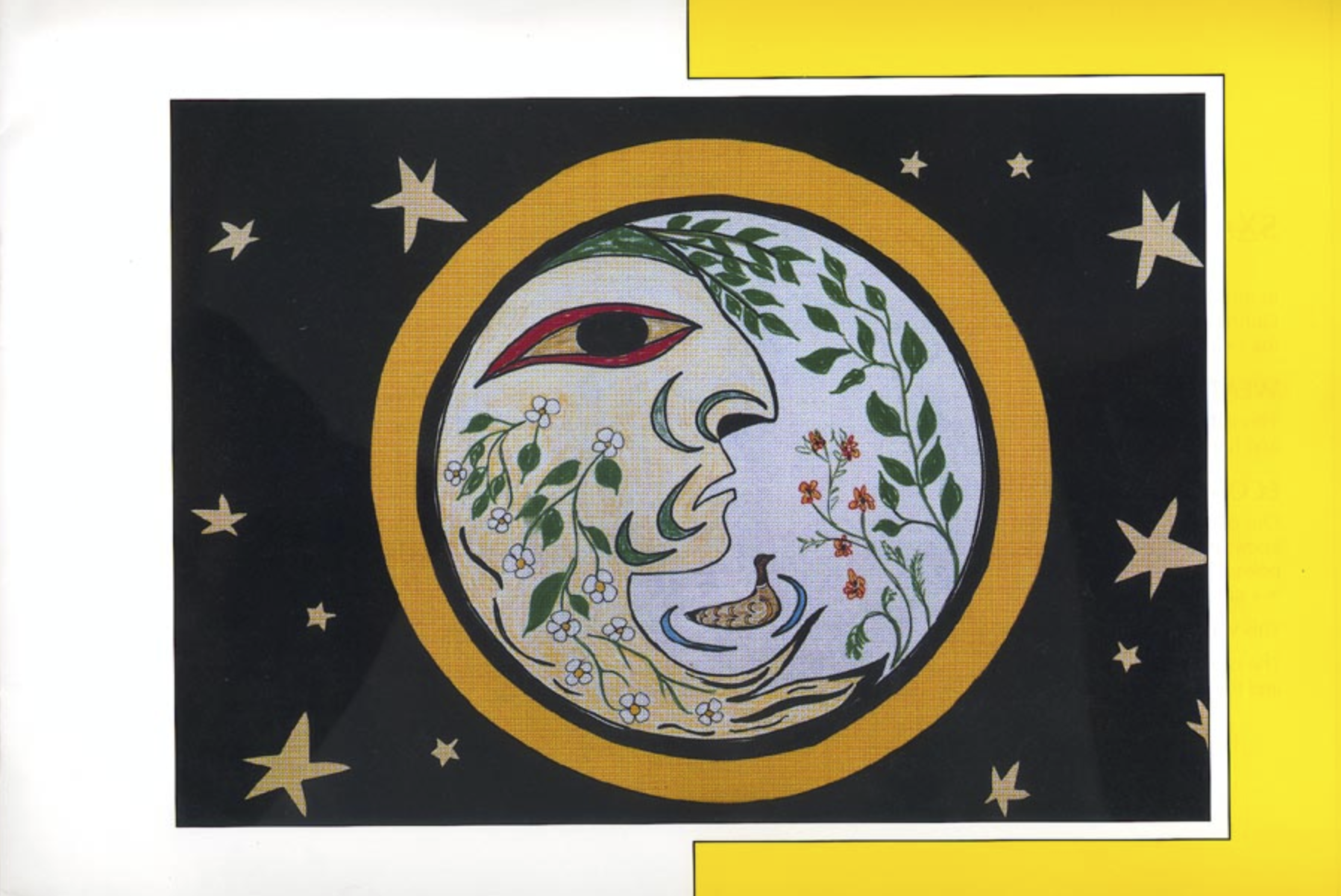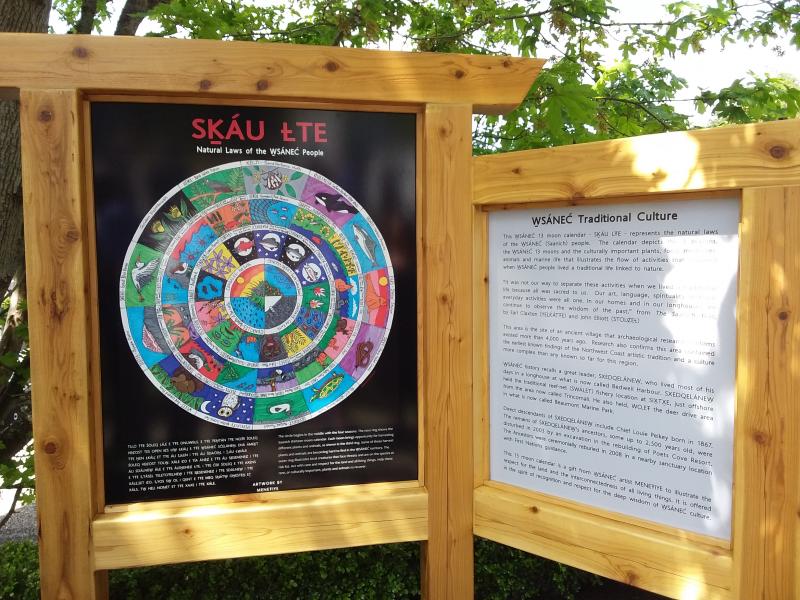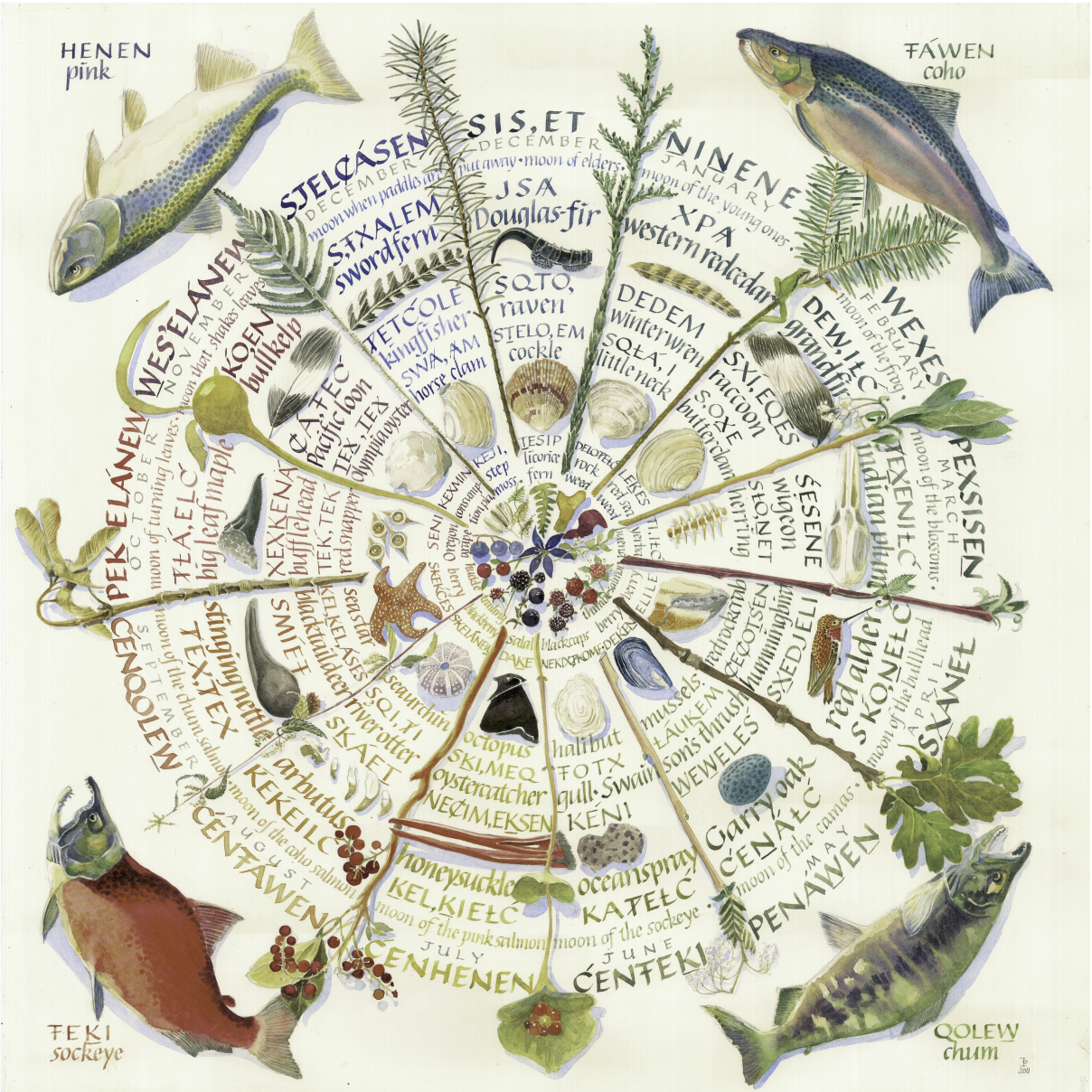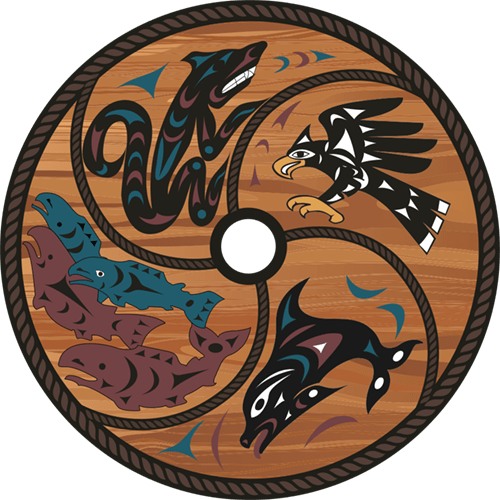This time of year, is traditionally known as PEXSISEṈ – The Moon of the Opening hands, the blossoming out Moon.
NIȽ PEXSISEṈ ȽḰÁLJ ĆȽ ENÁ,. PEXSISEṈ TŦE MEQ STÁṈ JISEṈ TŦE ŦÁŦḴI SU ȻILs TŦE SPAKEṈ.
TW̱E YOŦ OL U PE,PE,W̱ÁLS TŦE SĆES E TIÁ ȽḰÁLJ. NIȽ EN ŚW̱TU,O, QENEW̱TŦE XELXELJ. ȻNIȽ
EN SU OLEXET EN SU ŚÁMET I KELOEṈ E TŦE S,OX̱E.
TES E TŦEN ŚW̱ĆAḴET TŦE XPȺ. EN SU ȽENÁS JELLIs NIȽ ĆOȻEW̱SE TŦE SȽEUI E TIÁ, ĆEN
ȾOȽEN. NIȽ SE SU XÁĆENs TŦE ḰȽȺs TŦE XPȺ EN SU ĆȺ E TŦE XEUES SNEW̱EȽ E TIÁ, ĆEN
ȾOȽEṈ.
ĆEL,LÁL SW̱I YÁ, ŦEṈŦEṈ I IYOḴTEL E TŦE ĆOLEḰ W̱ILṈEW̱E TŦE PKELḴEN SĆȺ NIȽ COȻEW̱SE E
TIÁ, ĆENȾOLEṈ ȻE ĆȺ EW̱SE.
The plants and trees are opening up their hands again and the moon meets their welcome. All of nature is blooming. The Earth renews its strength.
CONNECTIONS AND BACKGROUND INFORMATION
At this time of year, the trees open their leaves in welcome, just as the W̱SÁNEĆ People open their hands to show thanks.
WEATHER
There is less rain than in the previous months and it is warmer. The warmth helps to dry out the land and enables the drying and preservation of food.
ECONOMIC ACTIVITIES
During this time, the W̱SÁNEĆ Peoples hunted and dried XELXELJ (Brant Geese) for future use. Float nets were placed where the XELXELJ would feed along the tide line to capture the geese. Clams, Oysters and mussels were also gathered as they were at their best during this time of year.
Cedar trees were fallen to make boats, and other things. The warmer weather caused the tree sap to run up the trees, making it easier to strip the bark. The fallen trees were then left to cure and the bark was saved for weaving into mats and clothing.
Before the W̱SÁNEĆ People started to raise sheep, they would use goat and dog hair for spinning yarn and knitting. Their primary wool source was a breed of dog that was small, white and woolly. The warmer weather caused the dogs to shed and their hair would be gathered for carding and later, knitting.
THINGS TO THINK ABOUT
- What animal hair or wool is used in other countries? (e.g. Llamas)
- What activities happen in Western culture’s Gregorian calendar that are similar to those in the First Nations?
This illustration of the W̱SÁNEĆ calendar, SḴÁU ȽTE, by artist MENEŦIYE is located on S,DÁYES (South Pender Island). The illustration depicts the four seasons, the 13 moons and the culturally important plants, food, medicines, animals and marine life.
Based on the sacred interconnectedness of all things, the observation of the 13 moons is part of W̱SÁNEĆ natural law. Each of the 13 moons provides guidance as to what cultural and economic activities are best suited for the time of year, as well as what weather to expect and what food is most abundant.
Artist Briony Penn, copyright Tsawout First Nation.
“It was not our way to separate these activities when we lived a traditional life because all was sacred to us. Our art, language, spirituality and our everyday activities were all one. In our homes and in our longhouses we continue to observe the wisdom of the past.”
~The Saanich Year, by Earl Claxton (YELḰÁTŦE) and John Elliott (STOLȻEȽ).
The 13 moons don’t line up exactly with the Gregorian 12-month calendar, but loose associations between months and the moons can be made, as shown above.










